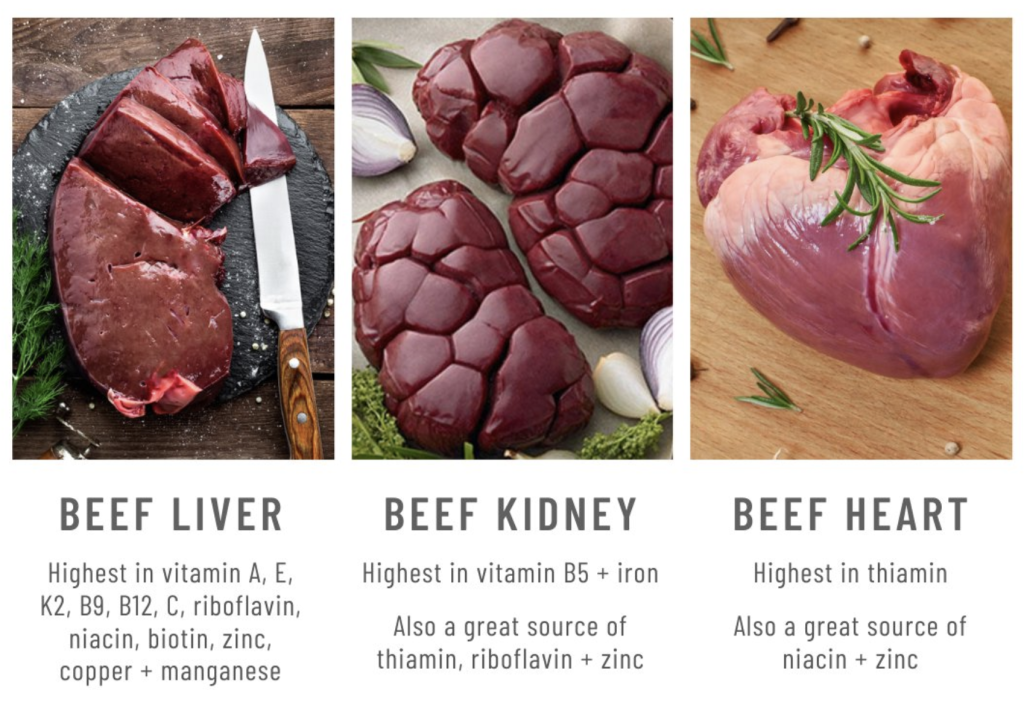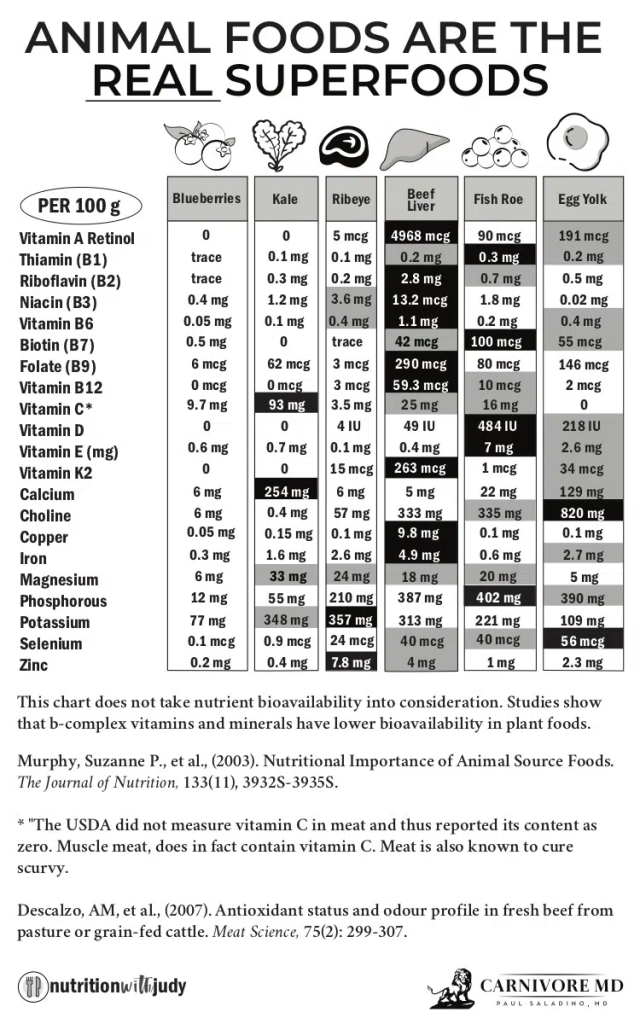The Surprising Benefits of Feeding Your Kids Organ Meats
Introduction
As parents, we all want to give our children the best chance at a healthy life. But with so many demands on our time and energy, it can be overwhelming to figure out the best way to do that. One often overlooked aspect of children’s diets is the inclusion of organ meats. While they may not be the most glamorous or familiar foods, organs are incredibly nutrient-dense and offer a range of health benefits for growing bodies and brains.
In this article, we’ll explore the surprising benefits of feeding your kids organ meats and provide practical tips for incorporating them into your family’s diet. By prioritizing organs as part of your child’s diet, you’ll take an important step towards supporting their overall health and wellness.
Organs used to play a much more significant role in our diets
Unfortunately, much of our nutritional guidance has moved away from these superfoods, replacing them with multivitamins, plant cocktails, and vitamin- and mineral-fortified foods like cereals. Yet history was ripe in using and understanding the power of organs in our diets.
Many historical references exist on children being fed organ meat to improve their health. For example, feeding organ meats to pregnant women and young children in traditional cultures was common to support their growth and development. In some cultures, the liver was considered an essential food for pregnant women and children due to its high nutrient content.
In the early 20th century, pediatricians began recommending the liver as a food for infants and young children to prevent and treat anemia. This was because the liver is a rich source of heme iron, which is more easily absorbed by the body than non-heme iron found in plant foods. In the 1920s and 1930s, the liver was commonly included in commercial baby food products for this reason.
During World War II, the British government promoted the consumption of liver to combat malnutrition, especially among children. The government distributed free liver to families and encouraged them to incorporate it into their meals.
Today, there is a growing interest in the nutritional benefits of organ meats, and many parents are incorporating them into their children’s diets.
What Are Organ Meats?

Organ meats, also known as offal, are the edible organs of animals, including the liver, kidneys, heart, brain, tongue, and more. While these cuts of meat may not be as commonly consumed as muscle meats like chicken breast or steak, they are incredibly nutrient-dense and can provide a range of health benefits for children.
Nutritional Benefits of Organ Meats

Organ meats are packed with an impressive array of essential vitamins and minerals crucial for children’s growth and development. For example, the liver is a particularly rich vitamin A source, vital for healthy vision, immune function, and skin health. Organs also contain high levels of vitamin D, essential for healthy bones and teeth, and vitamin K, which helps with blood clotting and bone health. Additionally, organs provide significant amounts of iron, zinc, and copper necessary for healthy immune function, red blood cell production, and cognitive development.
Iron is essential for children, as it is necessary for producing hemoglobin, a protein in red blood cells that carries oxygen throughout the body. Without enough iron, children can develop anemia, leading to fatigue, weakness, and impaired cognitive function. Zinc is another essential mineral key to immune function, wound healing, and protein synthesis. Finally, copper is vital for healthy bones, connective tissue, and nervous system function. Incorporating organ meats into your child’s diet can help ensure they get these essential nutrients.

It is worth noting that organ meats should be consumed in moderation, as they can be high in specific vitamins and minerals, which can be harmful in excess. However, when consumed as part of a balanced diet, organs can provide significant health benefits for children.
Brain Health Benefits
Organ meats are an excellent source of choline, an essential nutrient critical for children’s brain development. Choline is vital for producing acetylcholine, a neurotransmitter involved in memory, learning, and mood regulation. Choline also plays a role in forming and maintaining the myelin sheath, a protective layer around nerve cells that is important for efficient communication between brain cells.
Research has shown that choline intake during pregnancy and early childhood can significantly benefit children’s cognitive function and brain health. In fact, a study published in the Journal of Pediatrics found that higher maternal choline intake during pregnancy was associated with better cognitive function in infants at six, 12, and 24 months of age. Similarly, a study published in the American Journal of Clinical Nutrition found that children with higher choline intakes had better cognitive performance than children with lower intakes.
Organ meats are an excellent source of choline, with the liver being one of the richest dietary sources of this critical nutrient. Therefore, incorporating organs into your child’s diet can help support their brain health and cognitive function, giving them the best chance at success academically and in their daily lives.

Digestive Health Benefits
Organ meats can also provide significant benefits for children’s digestive health. One of the key benefits of organs is their prebiotic properties. Prebiotics are a type of dietary fiber that nourishes the beneficial bacteria in the gut, helping to support a healthy gut microbiome. The gut microbiome is a complex community of microorganisms that plays a critical role in digestion, immune function, and overall health.
Research has shown that a healthy gut microbiome can improve digestive function, reduce inflammation, and support immune function in children. In fact, a study published in the Journal of Pediatric Gastroenterology and Nutrition found that children with a healthy gut microbiome had a better digestive function and fewer digestive symptoms than children with an imbalanced gut microbiome.
Organ meats are particularly rich in prebiotic fibers such as inulin and fructooligosaccharides (FOS), which can help to support the growth of beneficial bacteria in the gut. By incorporating organs into your child’s diet, you can help to support their digestive health and promote a healthy gut microbiome. This can lead to improved digestion, better immune function, and overall better health for your child.
Tips for Incorporating Organ Meats into Your Child’s Diet
While organ meats offer many health benefits, they can also be intimidating for parents not used to cooking with them. Here are some practical tips for incorporating organs into your child’s diet:
- Choose high-quality sources: When selecting organ meats for your child, it’s important to choose high-quality sources. Look for organs from grass-fed or pastured animals, which are likely higher in nutrients and lower in harmful substances such as antibiotics and hormones. You can find organs at your local butcher or online from reputable sources.
- Introduce them gradually: If your child is not used to eating organ meats, it’s best to introduce them gradually. Start by adding small amounts of organs to your child’s favorite dishes, such as meatloaf or spaghetti sauce. Over time, you can gradually increase the number of organs in your child’s meals.
- Get creative with recipes: Organ meats can be used in various recipes, from stews and soups to meatballs and tacos. For example, you can add chicken livers to a vegetable soup or make beef heart skewers for the grill. Get creative with your recipes and experiment with different ways to incorporate organs into your child’s favorite meals.
- Plan your meals: Meal planning can make incorporating organ meats into your child’s diet easier. Plan ahead and include organs in your weekly meal plan. This can help you stay organized and ensure that your child gets a variety of nutrient-rich foods in their diet.
One of my favorite dishes to include organs in my kid’s diets is chili:
By following these tips, you can help to incorporate organs into your child’s diet in a way that is both delicious and nutritious. With a bit of creativity and planning, you can provide your child with all the health benefits that organ meats have to offer.
Conclusion
In conclusion, organ meats are a nutritional powerhouse that can provide numerous health benefits for children. From supporting brain development to improving digestive health, organs offer a unique combination of essential nutrients for growing bodies. As parents, we want to give our children the best possible chance at good health, and incorporating organs into their diet is a simple and effective way.
When it comes to family wellness, every small step counts, and choosing to add organ meats to your family’s meals is a positive step towards healthier eating habits. By gradually introducing organs and experimenting with recipes, you can find delicious and easy ways to incorporate this nutrient-dense food into your child’s diet. Your child’s health is worth the effort, and by prioritizing healthy eating habits, you can help them grow up strong, healthy, and happy.
Stay tuned for more blogs covering the importance of organ meats and how to include them in your diet!





